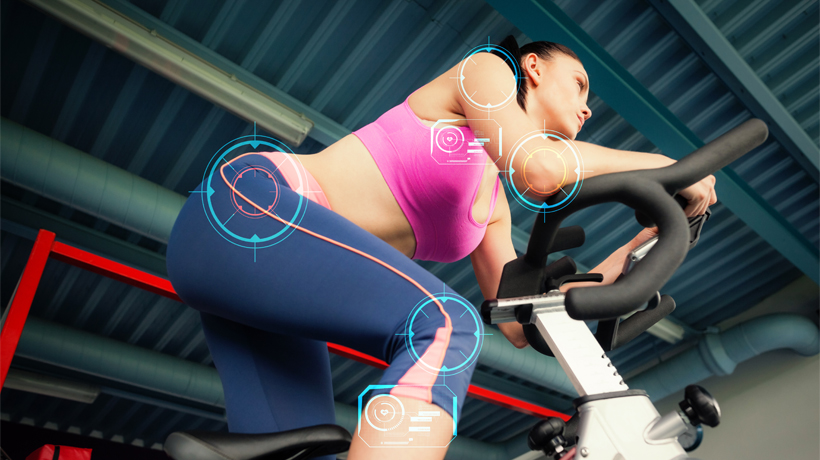If you haven’t tried a spin class yet, you probably have a friend who has gushed about it. Spin classes are a certifiable health trend, with variations of music, vibe, and athletic difficulty to appeal to a range of cyclists.
SPINNING is actually a registered trademark term, owned by the American health and fitness company Mad Dogg Athletics. Still, many people have started using it colloquially for any class with cycling on an indoor stationary bike.
Spin classes feature an instructor leading cyclists through high-intensity cardio, which is set to the beat of thumping music for about 45-60 minutes. Some studios, like SoulCycle, light the room with candles and use fitness instructors who also function as motivational speakers. Some spin classes also feature a range of movement besides pedaling, including upper body exercises.
Indoor cycling can offer a number of health benefits when done safely. However, because this can be an intense exercise, there may be a risk of injury if you overdo it or don’t do it properly. Talk to your doctor before trying a new exercise program.
Lose fat
Aerobic exercise torches several hundred calories in an hour, depending on your height, weight, and age. Spin instructors develop programs that specifically maximize calorie burn. Most incorporate high-intensity interval training (HIIT), which research shows is more effective at burning calories than steady-state cardio. Instead of a long, slow-and-steady grind on a stationary bike, instructors urge cyclists to vary their pace from high energy to recovery periods to challenge their muscles.
Besides cardiovascular exercise, spin classes can develop muscular strength, too, which is also a crucial factor in fat loss. According to Harvard Health Publishing, cycling primarily engages the lower body muscles.
“In the power phase of pedaling (the downstroke), you use the gluteus muscles in the buttocks, the quadriceps in the thighs, and the gastrocnemius and soleus muscles in the calves,” says a Harvard health article. “In the recovery phase (backstroke, up-stroke, and overstroke), you use the hamstrings in the back of the thighs and the flexor muscles in the front of the hips.”
Protect joints
If you’re recovering from an injury, have age-related stiffness, or struggle with joint pain, cycling is an exercise that relieves pressure on the knees and ankles. Sitting on a stationary bike mostly places your weight in your pelvis instead of your legs, according to a supplement in the Scandinavian Journal of Rehabilitation Medicine. This can give you the benefits of exercise without the barrier of joint pain.
Reduce stress
Stress can elevate your cortisol levels, which can lead to depression, obesity, insomnia, indigestion, and heart disease. Aerobic exercise can lower your cortisol levels by shooting oxygenated blood to the muscles throughout your body.
But beyond your physical movement, the positive motivation from the instructor, the feel-good music, and the empowerment from the group in the spin class all aim to help you relieve stress and feel mentally stronger.
Sources:
https://www.activemgmt.com.au/spinning-the-proper-noun/
https://spinning.com/about-spinning
https://www.soul-cycle.com/about/#welcome
https://www.hindawi.com/journals/jdr/2017/5071740/
https://www.health.harvard.edu/staying-healthy/the-top-5-benefits-of-cycling
https://www.issaonline.edu/blog/index.cfm/2016/is-cardio-really-the-secret-to-fat-loss
https://www.health.harvard.edu/staying-healthy/the-top-5-benefits-of-cycling
https://www.ncbi.nlm.nih.gov/pubmed/3468609


